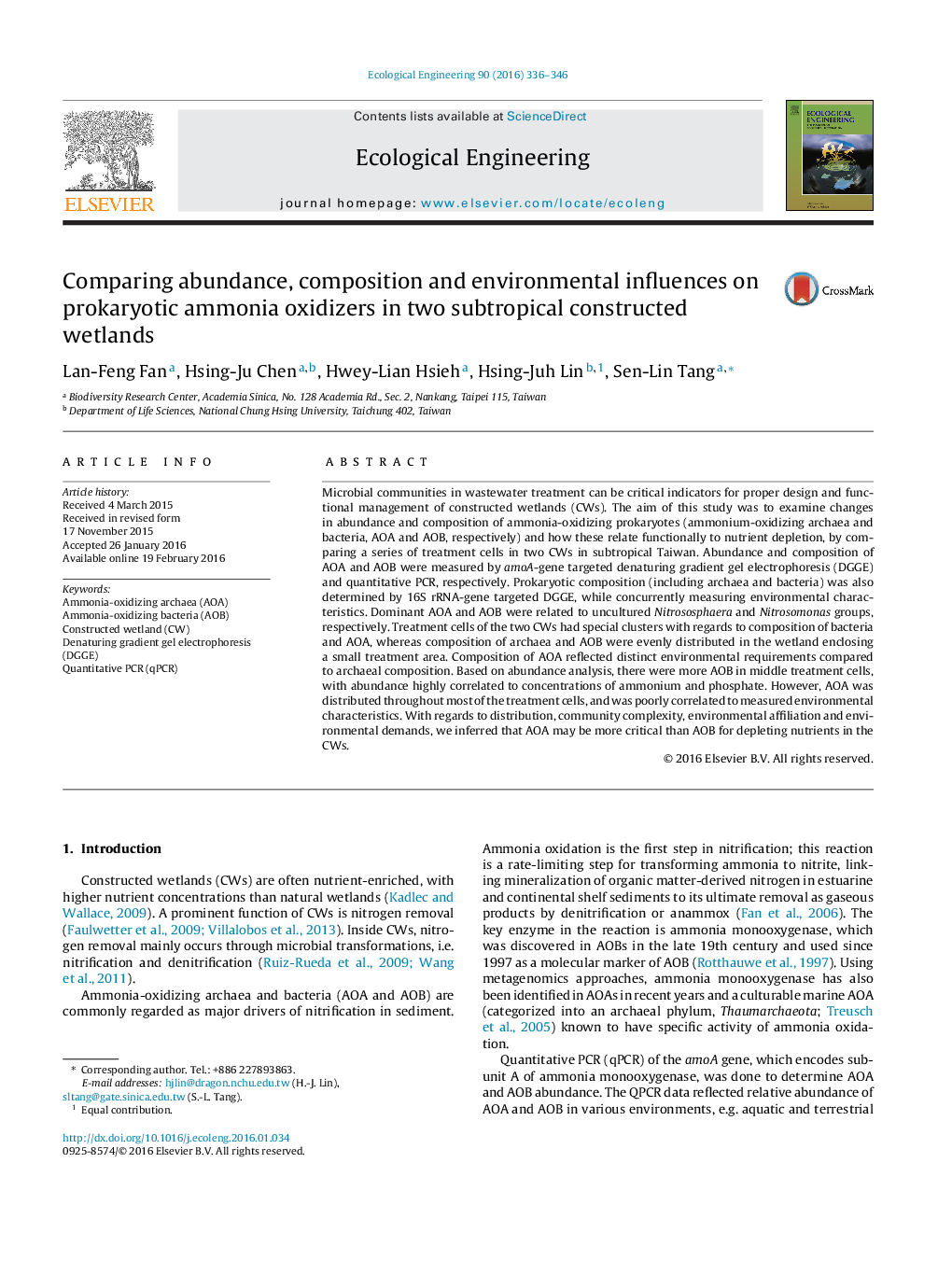| Article ID | Journal | Published Year | Pages | File Type |
|---|---|---|---|---|
| 4388679 | Ecological Engineering | 2016 | 11 Pages |
Microbial communities in wastewater treatment can be critical indicators for proper design and functional management of constructed wetlands (CWs). The aim of this study was to examine changes in abundance and composition of ammonia-oxidizing prokaryotes (ammonium-oxidizing archaea and bacteria, AOA and AOB, respectively) and how these relate functionally to nutrient depletion, by comparing a series of treatment cells in two CWs in subtropical Taiwan. Abundance and composition of AOA and AOB were measured by amoA-gene targeted denaturing gradient gel electrophoresis (DGGE) and quantitative PCR, respectively. Prokaryotic composition (including archaea and bacteria) was also determined by 16S rRNA-gene targeted DGGE, while concurrently measuring environmental characteristics. Dominant AOA and AOB were related to uncultured Nitrososphaera and Nitrosomonas groups, respectively. Treatment cells of the two CWs had special clusters with regards to composition of bacteria and AOA, whereas composition of archaea and AOB were evenly distributed in the wetland enclosing a small treatment area. Composition of AOA reflected distinct environmental requirements compared to archaeal composition. Based on abundance analysis, there were more AOB in middle treatment cells, with abundance highly correlated to concentrations of ammonium and phosphate. However, AOA was distributed throughout most of the treatment cells, and was poorly correlated to measured environmental characteristics. With regards to distribution, community complexity, environmental affiliation and environmental demands, we inferred that AOA may be more critical than AOB for depleting nutrients in the CWs.
